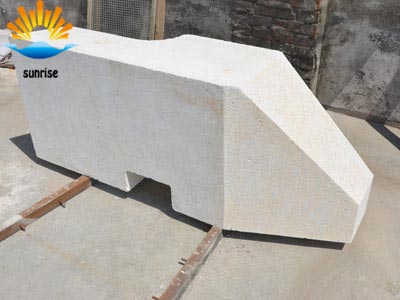Product Search
Quickly find the product you need
Products List
Refractory Knowledge
- Pros and cons of lightweight mullite bric
- Aggregates Used For the Production of Ins
- the development of the refractory brick i
- Refractory material production process
- Production Process Methods of Refractory
- The Use of Mullite Insulation Bricks
- Classification of mullite insulation bric
- Manufacturing process of fire clay insula
- Pollution and treatment in the production
- Thermal Shock Resistant Fireproof Heat In
Products List
- Phone:0086-370-63838939
- Email:sales@sunriserefr.com
- Office Address: No.36 Fengchan Road Of Zhengzhou, Henan, China (Mainland)
Advantages of Sunrise Group's Fused Zirconium Mullite Brick For Sales
Date:2019-08-23 17:10 | From:Zhengzhou Sunrise Refractory | Author:admin
Sunrise Refractory Group usually uses high alumina bauxite, bauxite, industrial alumina and clay as raw materials. When high alumina bauxite and bauxite are used, AI2O3/SiO2>3.2% Fe2O3<1.5% TiO2< 3% CaO< 1%. The bauxite raw material is pre-fired to remove the structural water to avoid popping and causing splashing when the water vapor is concentrated and discharged in the electric arc furnace.
Not only that, Sunrise Refractory Group believes that the correct choice of ingredients is an important process condition for the production of fused mullite bricks with high mullite content and corundum and glass phasors. The aluminum-silicon coefficient of the furnish (AI2O3/SiO2 mass ratio) characterizes the relative content of AI2O3 and SiO2 in the furnish. Theoretically, the silicon-aluminum coefficient (2.8-2.9) of the critical composition of mullite solid solution should be used. However, at the time of high temperature melting, a part of SiO2 is consumed in the volatilization and reduction reaction of SiO2, so that the content of Al2O3 in the batch is relatively increased. Therefore, in the actual batching, the control value of the aluminum silicon coefficient is lower than the theoretical value, and generally about 2.50.

The amount of reducing agent added depends on the content of Fe2O3 in the raw material, and should not be too much. Usually, about 0.225 kg of activated carbon is required to reduce 1 kg of iron. If the amount added is too large, the amount of SiO2 to be reduced will inevitably be excessive, affecting the amount of mullite. In order to make the gas generated during the melting process easy to escape, an appropriate amount of wood chips should be added to the ingredients.
If you have any question for our fused mullite bricks, call me and i will reply you in the first time.

